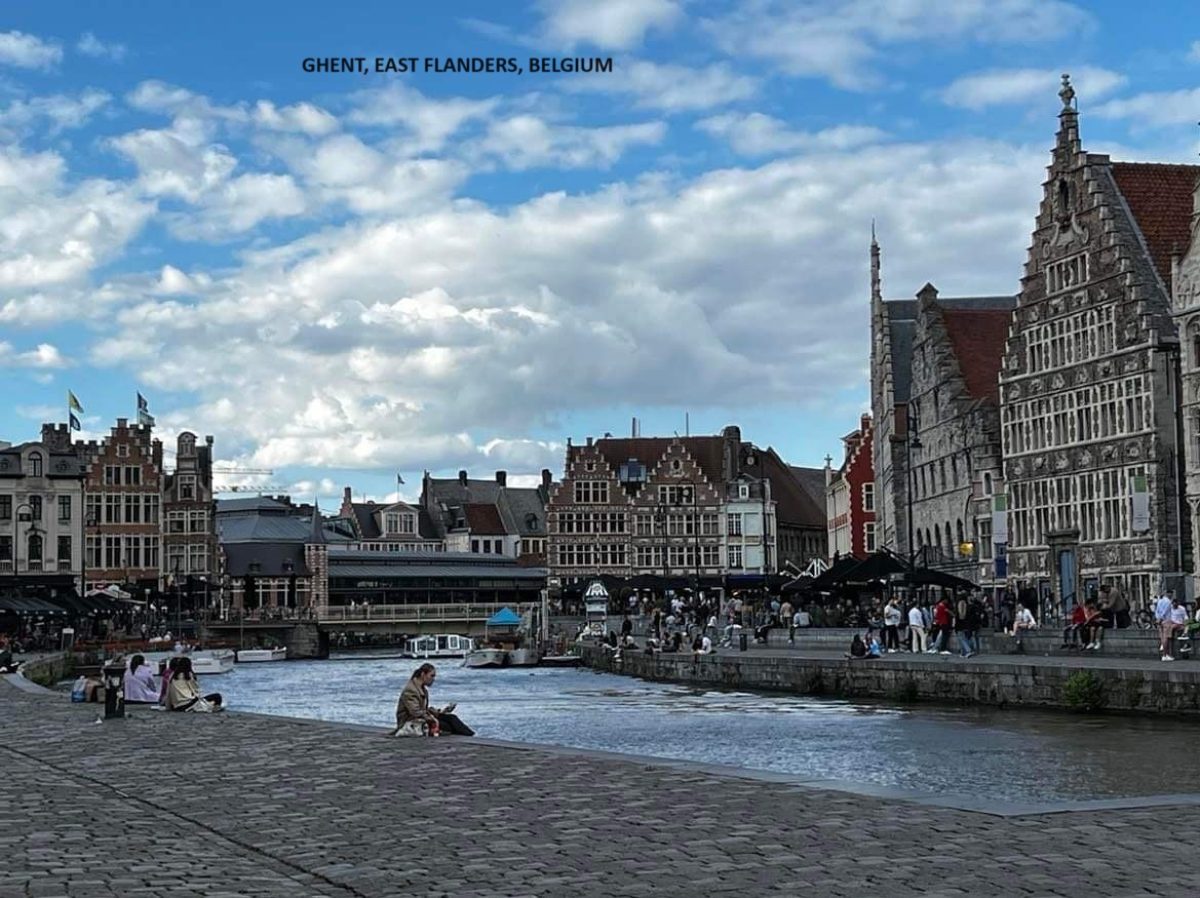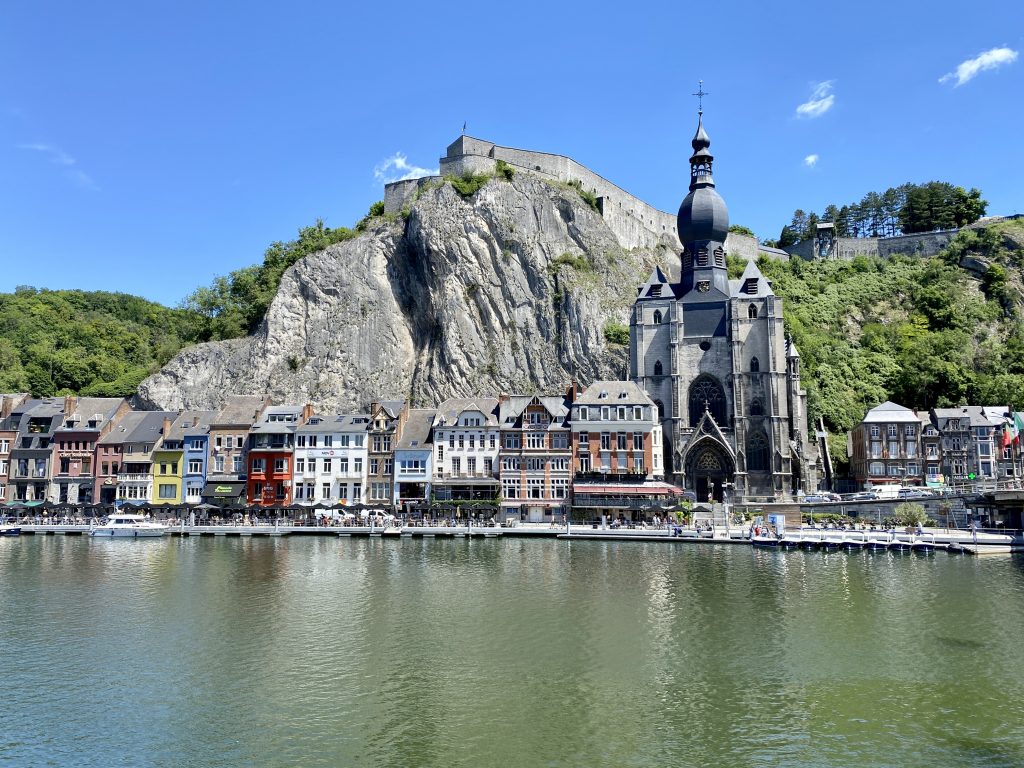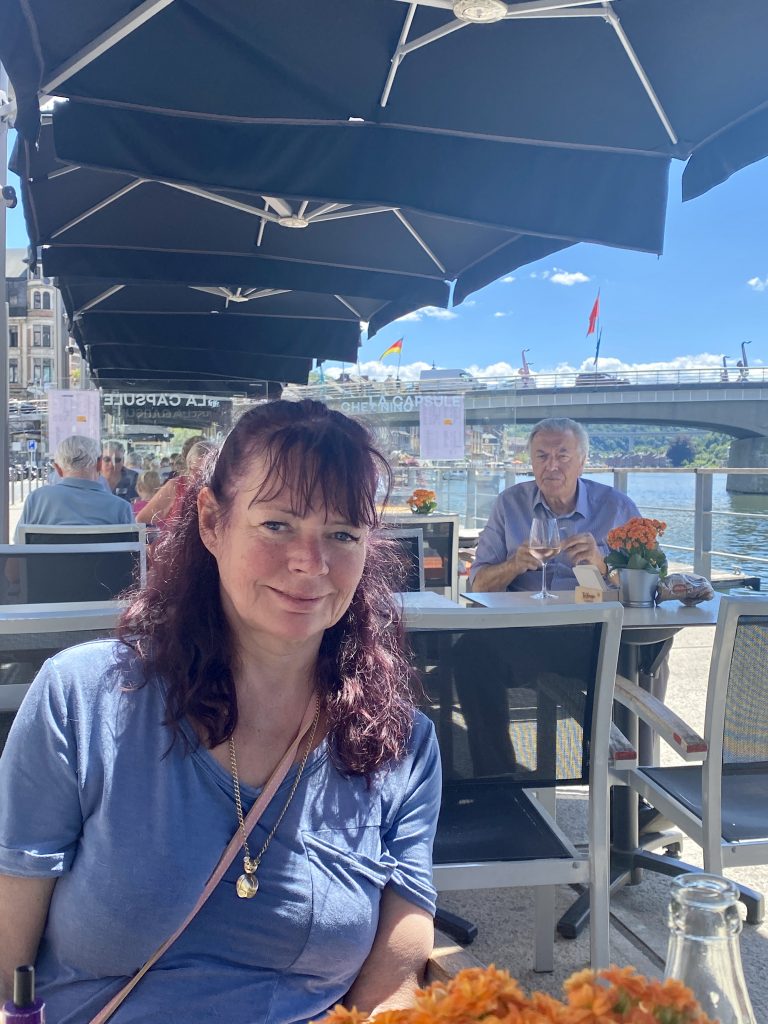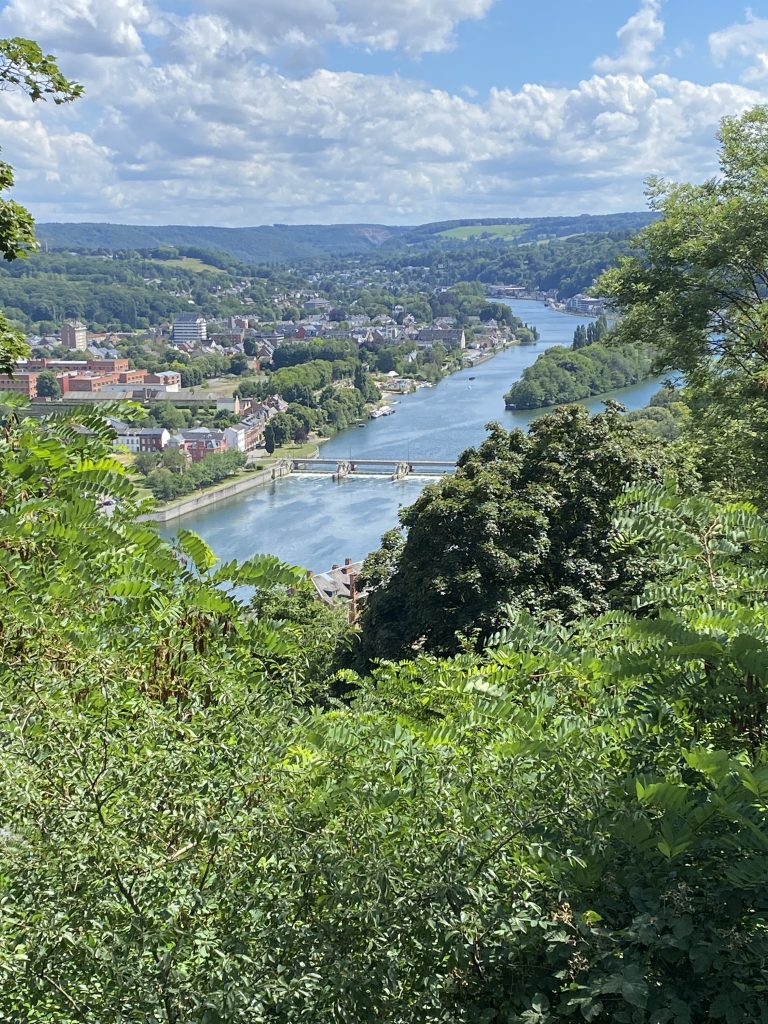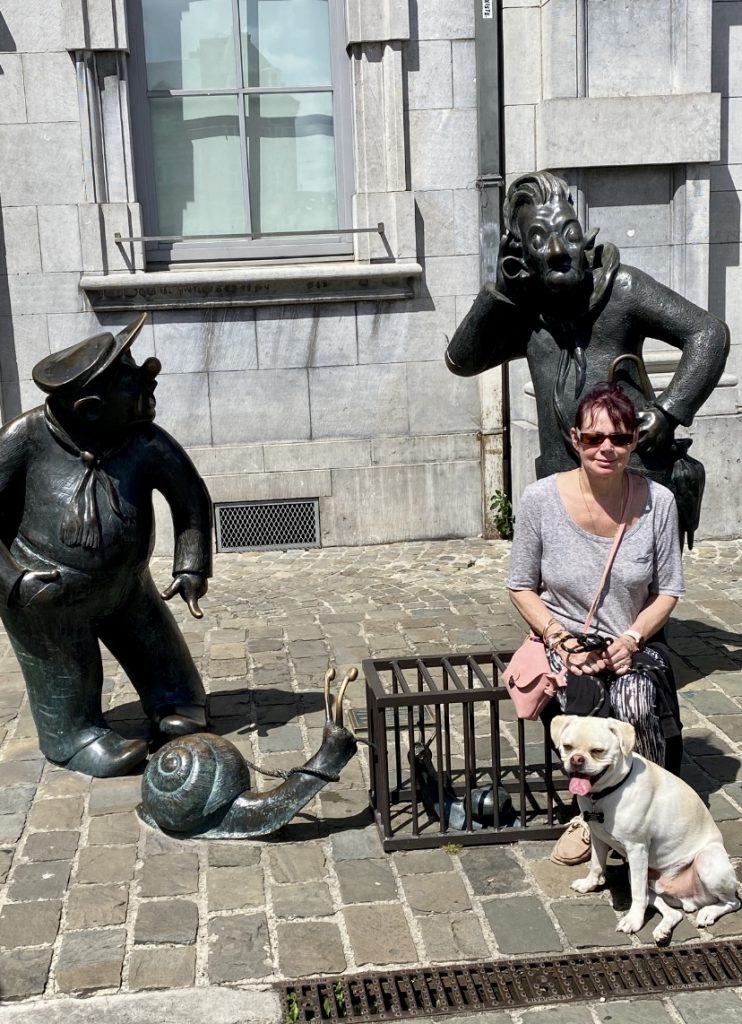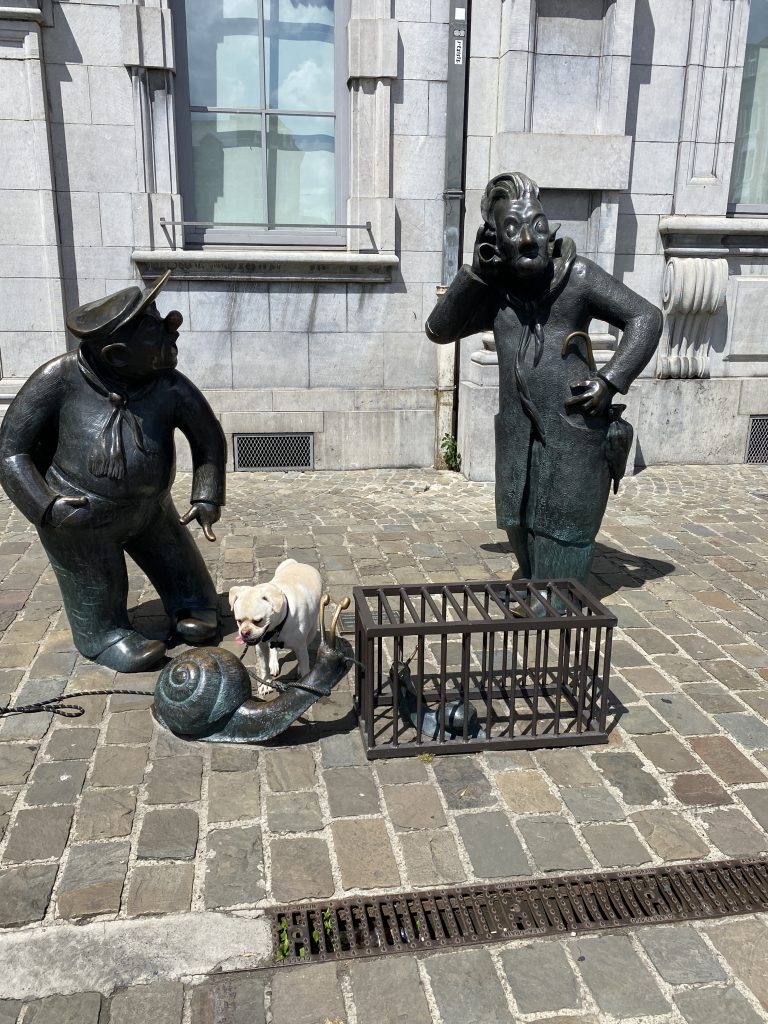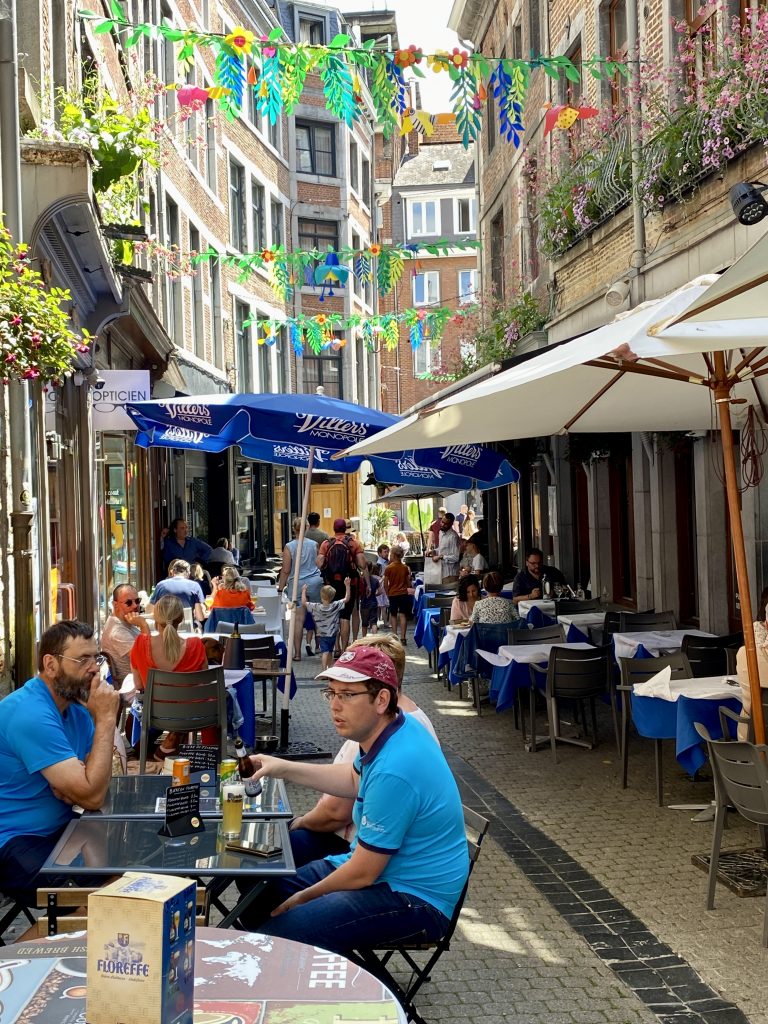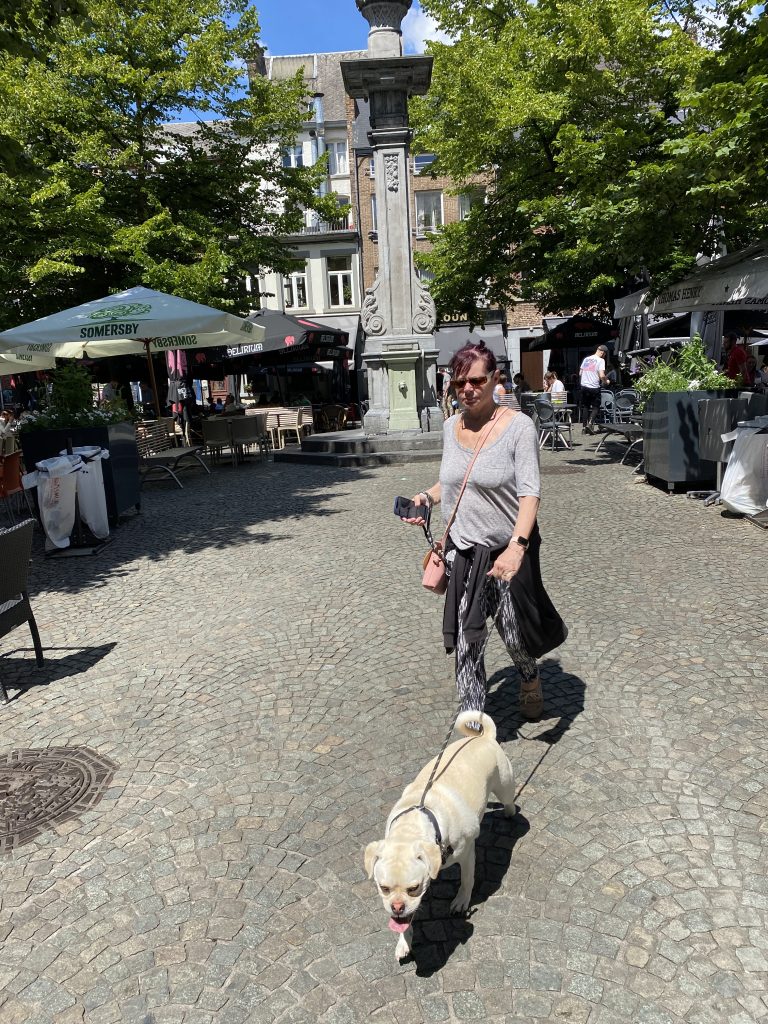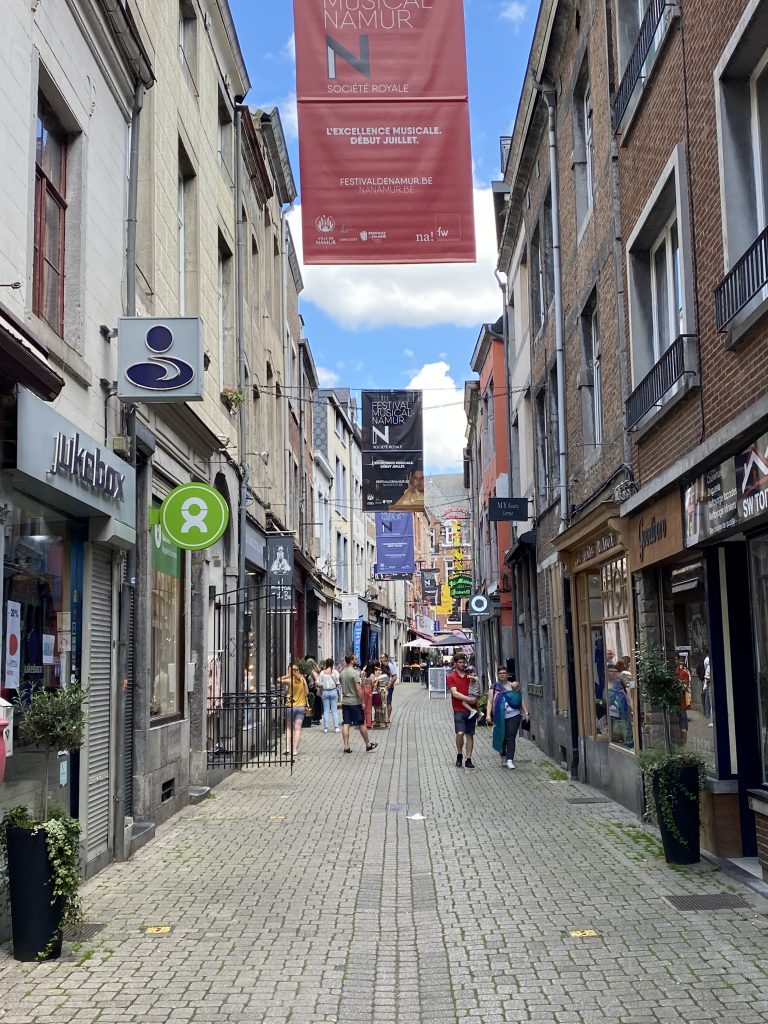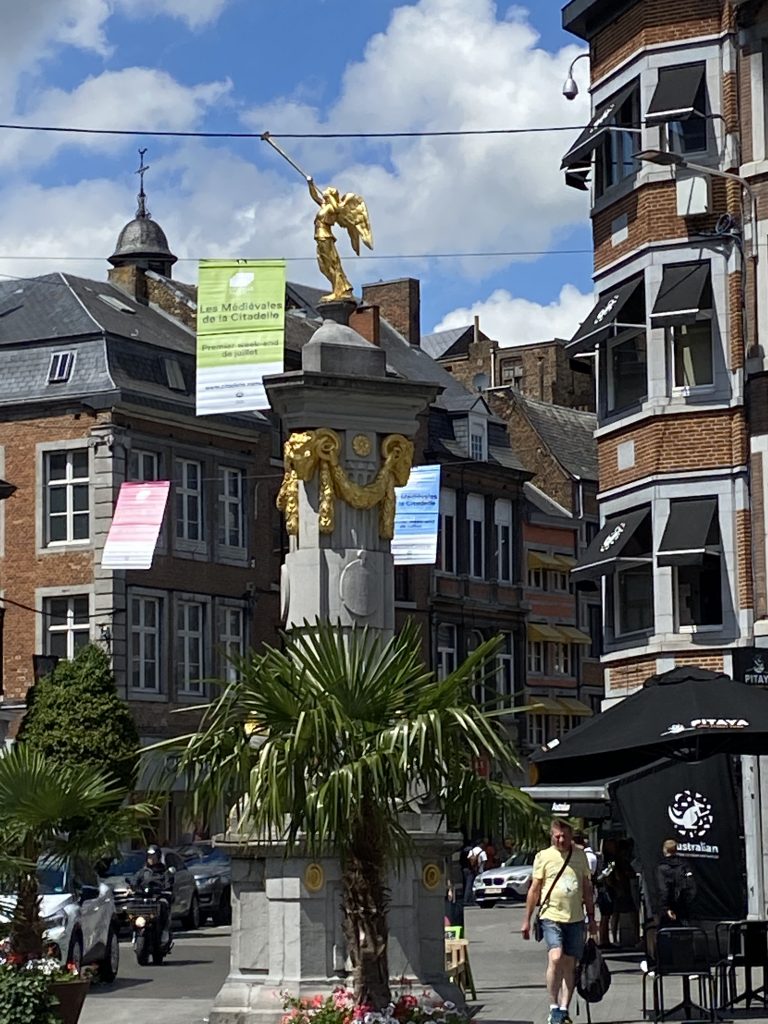Tour 10 didn’t get off to the best possible start with the tail end of a storm out in the Atlantic hitting northern Europe just as we were leaving Brighton. Heavy rain followed us all around the M23, M25 and M20 to Dover and, while it paused for our ferry crossing, it resumed as we docked in Calais. Unfortunately, the weather oulook across most of northern Europe for the next few days is bad. Anyone who follows our tours in the Van will know that we follow the sun and for once we were unsure as to which way to turn. It would be a dash down through France to Spain (which we did earlier this year) or through the Benelux countries to central Germany (where Marburg is currently enjoying 30 degrees centigrade). We decided in favour of Germany, not least because we have friends touring there at the moment and I’ve long wanted to visit Marburg.
On this first day of Tour 10 we decided to keep driving until it stopped raining and so it was that we arrived in the French speaking town of Tournai, some 50 miles south west of Brussels. We arrived late in the afternoon which rather limited my initial tour of the city because most public buildings had closed for the day but, no matter, there was still plenty to see and, anyway, Vanya was more concerned that I find us somewhere to eat that night.
It took me 25 minutes to walk to from our camp site (Camping L’Orient) to the triangular shaped ‘Grand Place’ which was once the site of a large Gallo-Roman cemetery but now serves as the city’s main square and is clearly the centre of activity with it’s many bars and restaurants. Sadly, the “square’s” focal point, the 72 metre high 12th century Gothic style Belfry (the tallest of it’s kind in Belgium), was closed. This was frustrating as the tower would have provided some great views over the city. Timing is everything.
No matter. There is plenty else of interest on the Grand Place. Leaving aside the numerous examples of colouful Flemish architecture (Tournai is very close to Flanders Region), there is the 13th century Roman Catholic church of Saint Quentin; the Halle aux Draps (the Cloth Hall) with it’s beautiful gilt detailed facade; a series of fountains and; an imposing bronze statue of the Princess of Epinoy, Christina Van Lalaing, a Calvanist who led a brave but ultimately futile defence of the city against Spanish Catholic invaders in 1581. More than anything, the square is a great place to sit with a Belgian beer or two and people watch.
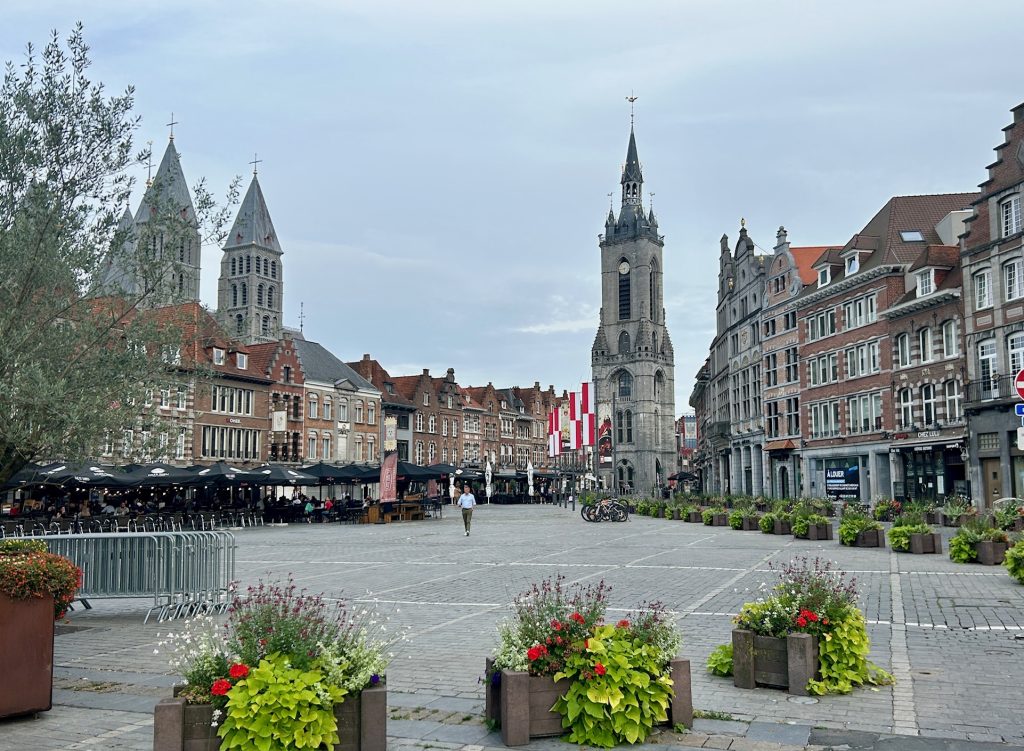

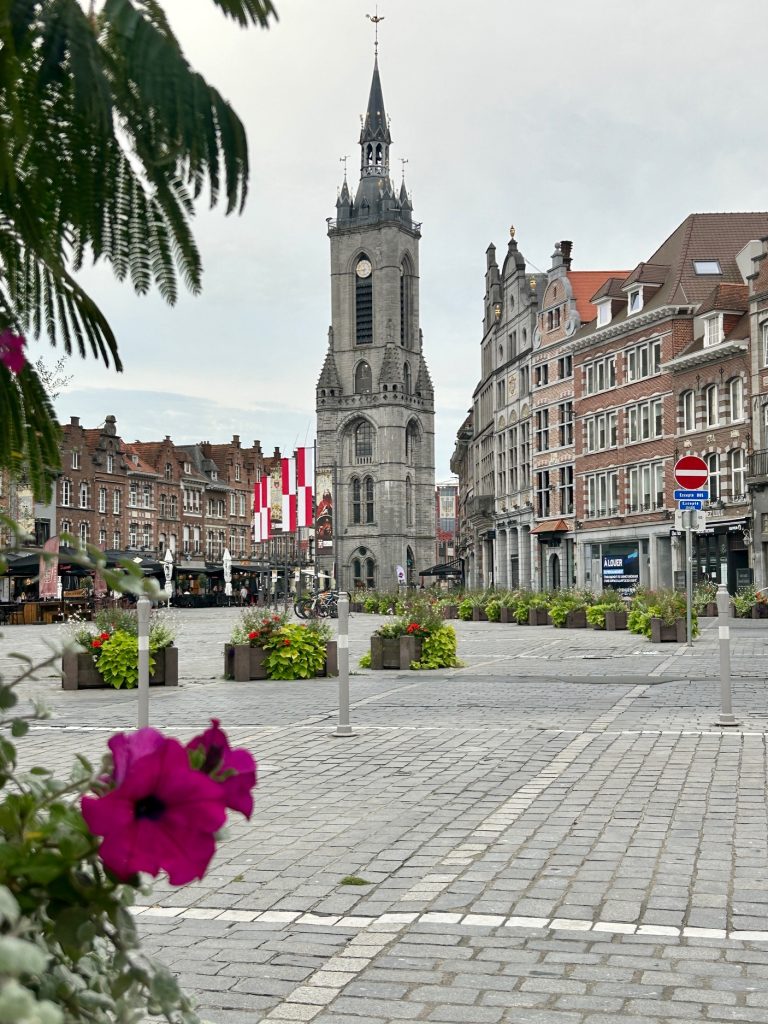
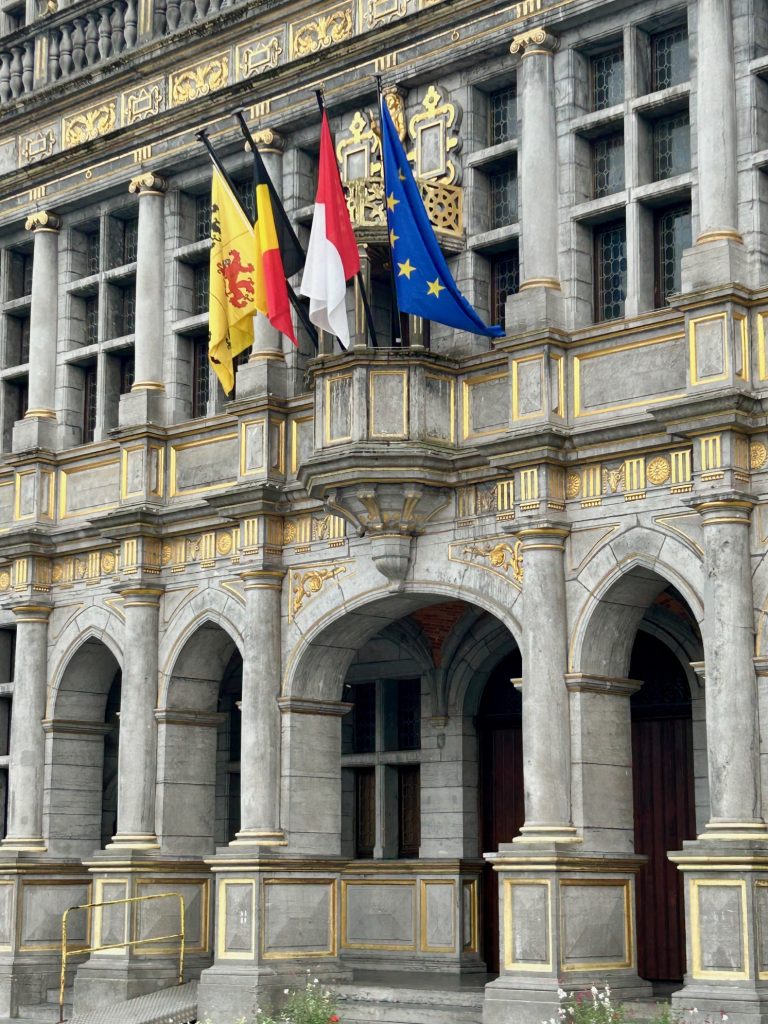
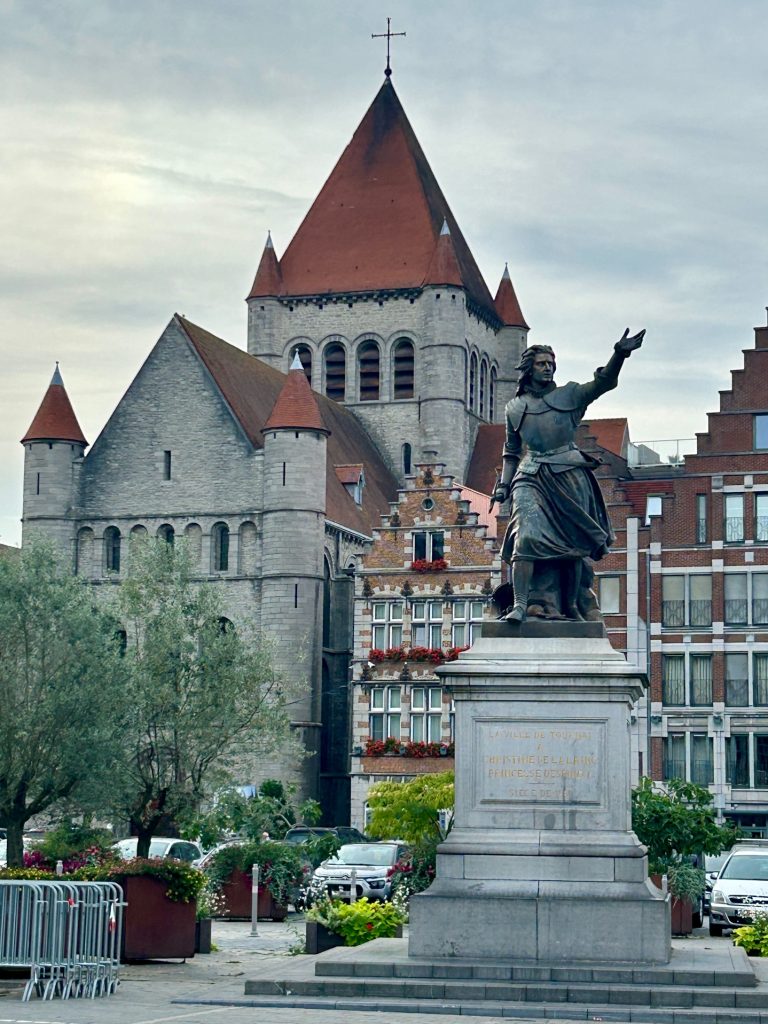
I was tempted to stop on the square for a quick beer but thought better of it. I needed to find a decent restaurant for the evening and; while the Grand Place has plenty of these, our German Shepherd, Nala, is handicapped and would find it difficult to negotiate the footbridges over L’Escault (the River Scheldt in Flemish) in her ‘walking-wheels’. I needed to find something on the other side of the river, closer to the campsite.
I headed back towards the river, pausing at the UNESCO World Heritage listed Cathedral of Our Lady of Tournai on my way. This beautiful 12th century Gothic style cathedral, with no less than 5 huge towers and a stunning 7 metre diameter stained glass rose window, was substantially damaged in 1999 by, of all things, a tornado. It has been claimed that this exceptionally unusual weather phenomenen caused 100 years of damage overnight. Small wonder that one whole side of the cathedral is still covered in scaffolding. I couldn’t gain entry, because the cathedral closes in the summer months at 17.15, and so took time to admire the bronze statue outside the cathedral of some blind pilgrims (Les Aveugles). I subsequently learned this striking monument was created by Guillaume Charlier in 1906. I’d never hear of him before but the detail on that statue is amazing.
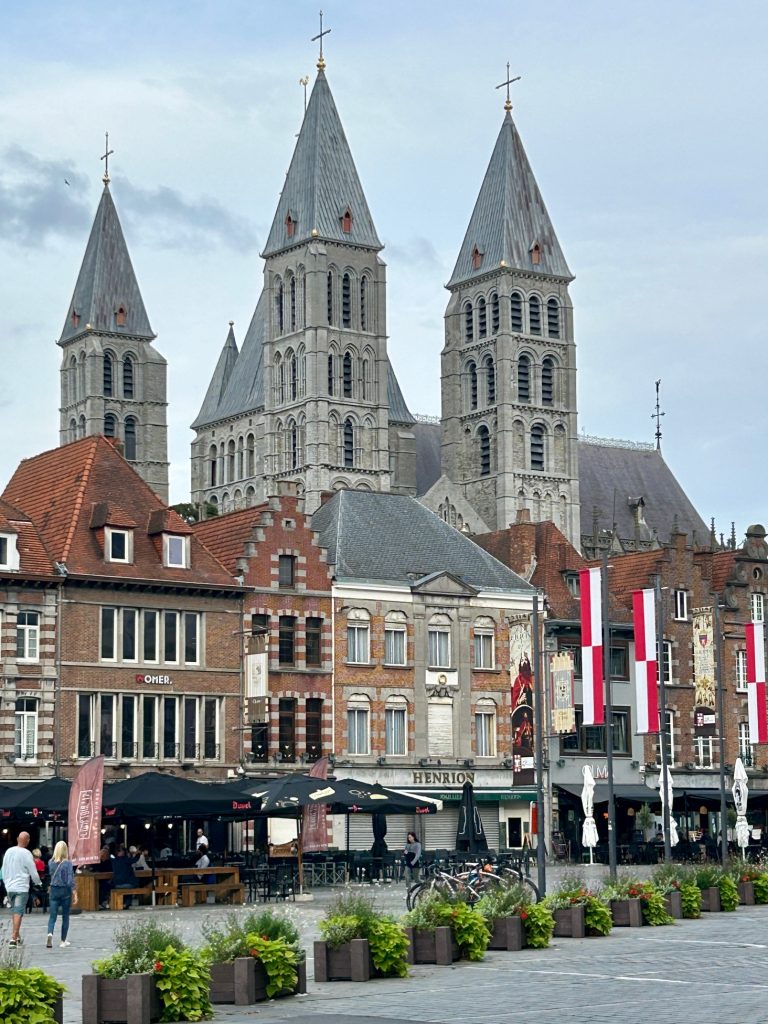

From the cathedral I walked down to L’Escault and then along past what until 2003 was a ‘Redemptorist’ church to the Pont des Trous. I haven’t been able to determine what the old church building is used for these days but, not having heard of the Redemptorists, I did check them out. They are a Catholic congregation committed to missionary work which was founded in the 18th century by a certain Alphonsus Liguouri (canonised in 1839). You want to know more, you’ll have to look it up yourself but, he seems to have been an all round good egg.
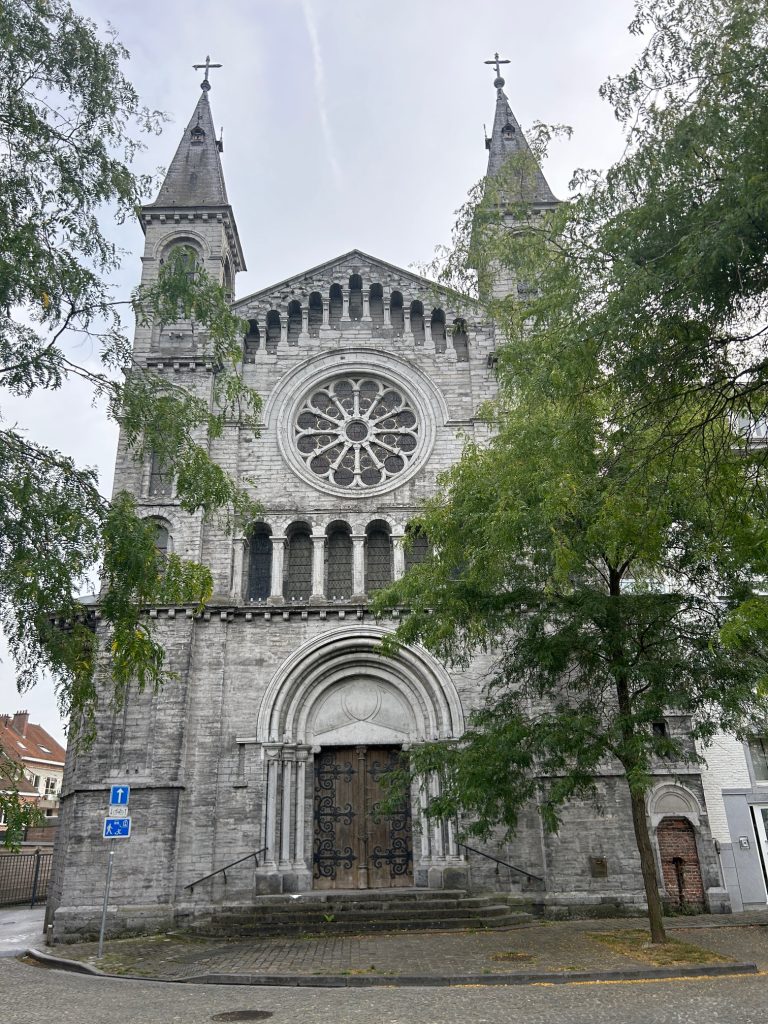

The Pont des Trous is a 13th century bridge which was originally part of Tournai’s defensive walls. It’s quite photogenic but it wouldn’t do to get Nala across the river in her walking wheels. There is a road bridge further along which she would be able to navigate but, following this route, the journey from the campsite would be too much for her. We would be eating in the Van this night.
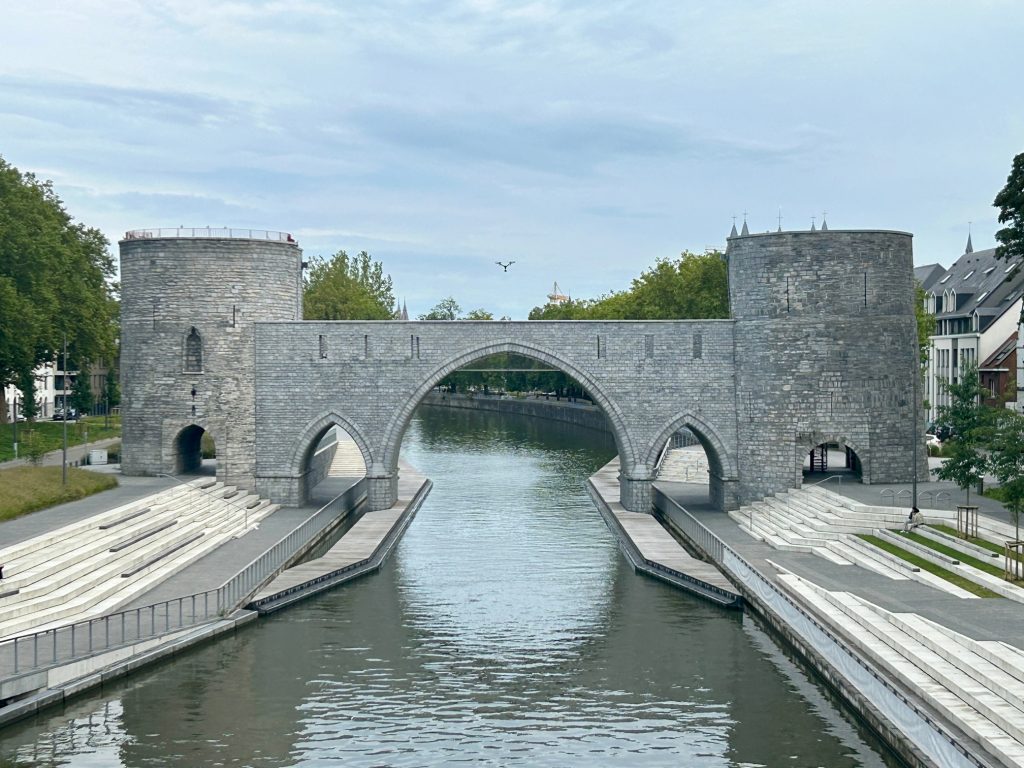
I took the obligatory photographs of the Pont des Trous and then made my way back to the campsite. There’s no doubt that I missed out on Tournai through arriving so late (I would have liked to visit the Hotel de Ville de Tournai, which occupies part of the former 11th century Benedictine Abbey of Saint Martin, and a number of other ecclesiastical buildings including the Eglise St Jacques and L’Eglise Saint Brice). There’s a lot of history there. Next time perhaps, weather permitting.


